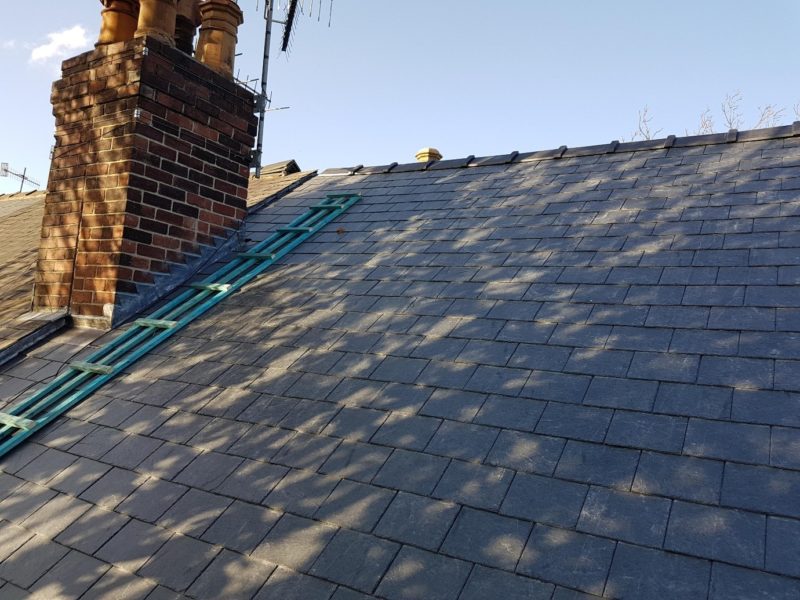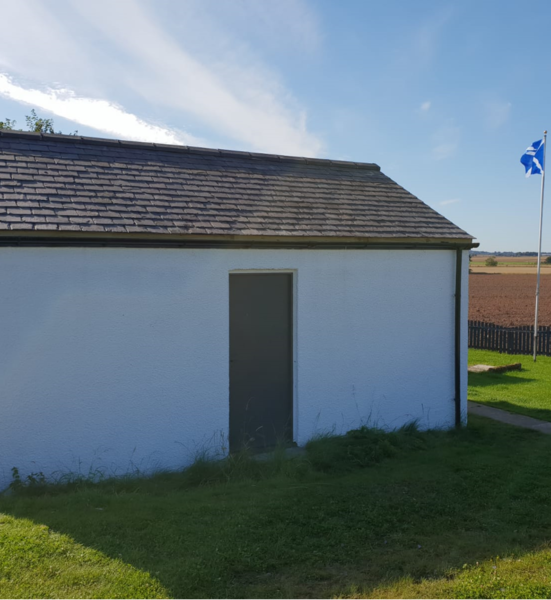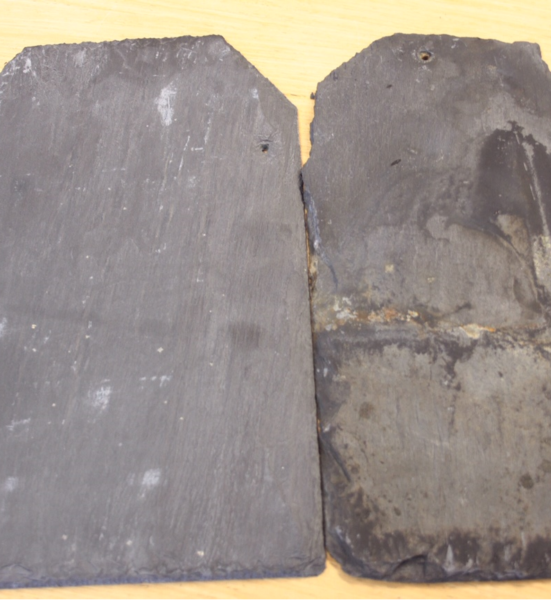A Guide to the Types and Grades of CUPA Natural Slate Roof Tiles
Natural slate roof tiles - a perfect roofing material!

Natural slate roof tiles are made from fine-grained, foliated, homogeneous metamorphic rock derived from shale-type sedimentary rock composed of clay or volcanic ash. They are incredibly durable and hard wearing. The fact that they don’t absorb water makes it unaffected by freezing temperatures. They are perfectly suited to the variety of weather we have in the UK. A roof is a significant investment. It needs not only to perform to keep you dry and sheltered, but also needs to look it’s best for years to come. Other materials with pigments and aggregates lose their colour and surface as they weather.
Today, there’s a wide choice of slate on the market. The process of choosing the natural slate roof tile for your roof is a similar process to choosing the carpets for your house. It’s very much down to personal preference. The questions you probably need to ask yourself (or take advice on) being: what colour? how thick? and what finish?
The majority of BRM slate comes from the quarries in northern Spain. These quarries are owned by CUPA Pizarras, the only manufaturer of natural slate roof tiles to also directly import their slate. In recent years the market has had an influx of lesser quality material and it’s performance is unproven. With a CUPA slate each piece can be traced right back to not only the quarry it came from, but who crafted and packaged it and the even to the day. A roof is a significant investment best not left to chance. CUPA Slates are considered to be amongst the highest quality on the market.
CUPA also offer the most comprehensive range
One in every 3 installations worldwide bears the CUPA brand. At BRM we supply natural slate roof tiles to all sorts of domestic projects all over the UK. From a re-roof of a Victorian terrace house, to a new build, a castle to a tiny Scottish Croft we’ve the perfect CUPA slate. Importantly too, unlike most of our competitors, with whom you’ll need to order well in advance of delivery, we hold vast slate stocks in our Depots throughout the UK. Chances are your choice will be readily available.
With shades ranging from dark grey, to graphite and blue/black, smooth or riven surface finishes and in 4 different grades, there are a few choices to be made:
What size?
Understandably extracting the biggest slate roof tile possible out of the rock has always been the priority for manufacturers. Historically a roof was laid in diminishing courses to get the most out of the material available. Size, like colour and texture, of slate roof tiles in a region was determined by the location nearest quarry. Imperial slate sizes were named after female nobility in 1738 by a Welsh quarry and were the industry standard for 200 years.
Smoother regular sized Welsh slate installed in uniform courses became common from the beginning of the 19th Century in our Victorian housing stock. A result of the railways and the industrial revolution.
Today modern methods of slate manufacture means slate can now cut into all shapes and sizes - the choice is vast. Random diminishing courses are no longer necessary unless you are replicating that traditional look.
Size now matters in terms of selecting the right size for the pitch, and exposure of the building in its setting.
In the UK, a rectangular shape is preferred. The most common size being the 500 x 250 mm - a “Countess” in old money. These days simply referred to by its size in metric or imperial measurements, 500x250 mm or 20x10 respectfully.
The further north you get the smaller the roof slate tile generally and the greater the over-lap (lap) to ensure a weatherproof roof. We might be talking perhaps a “Lady” 16 x 8 or 400x200 mm.

If you are looking for a slate suitable for a low pitch, the “Broad Countess” our 500 x 300 mm, can go down to 20 degrees and is holed at 115 mm as standard. It can also be produced and supplied with different holing gauges to suit the desired roof pitch, or to match in to existing areas of the roof. This applies to all sizes of CUPA slate.
When considering the right size of slate for your project the following rules of thumb apply:
- Bigger slates are more aesthetically pleasing on larger roofs.
- Wider slates work well in areas of high rainfall.
- Smaller slates are useful for complicated roofs with lots features like hips, valleys, dormers.
- Consideration must be given to any existing slates or an adjacent roof you need to match or join to.
- The size of slate tile will affect the amount of batten and fixings you require.
At BRM we are happy to discuss which size of slate would best suit your roof. We can also source different ornamental shapes like Bull Nose slates - a fantastic way of providing detail to a roof and commonly used in the UK for vertical cladding.
What colour and finish?
Other than personal preference, choices over colour and finish are often determined by the need to match the regional slate roofing prevalence. Scotland, Wales, Cornwall and Cumbria were historically the providers of slate. roofs in these regions all have their own characteristics. Slate from our domestic mining and quarrying has disappeared or proves too expensive for the vast majority of our customers. But you are still guaranteed to find the ideal slate in our range.
Examples of this regional prevalence include CUPA’s Heavy 3, a blue/black colour with non-rusting metallic particles and thin laminations. This is the primary choice for Scottish roofers needing an alternative to the Ballachulish slate that’s no longer in production. Especially the random slate for random diminishing courses to give an authentic traditional aesthetic, Another example being the CUPA 4 Excellence. A very flat and smooth finish, blue / black in colour. This has recently been approved for use in the Snowdonia National Park.


The CUPA 12 is very popular in London as it matches well against the Welsh slate that was important into the area. Welsh slate being very flat and smooth as well as a nominal 5mm thickness. Welsh Slate still comes in 3 grades referred to as Capital (5.5mm thick), County (7 mm thick) and Celtic (9 mm thick). This further highlights the traditional regional variations.
Slate from CUPA 5 and 18 quarries have more of a textured finish. They prove popular in areas where a more rustic appearance is required whilst still maintaining a thinner 5/6mm thickness.
Heritage Slate Roofing
CUPA’s slate are regularly chosen for some of the world’s most important historic monuments, allowing a restoration which maintains the original appearance of the heritage of the building and it’s setting. There are some stunning examples to be found on the CUPA Pizarras website.
When roofing Listed Buildings, in conservation areas or even National Parks the size of slate and possibly even the type may be advised to preserve the original appearance of the building and the heritage setting. We are proud to be able to offer advice how to find the appropriate slate for these projects and don’t just always recommend CUPA’s Excellence range! We recently matched CUPA’s H18’s (a grey slate with a riven edge, textured/ rustic finish and almost no visible pyrite) for Portland Works, a Grade 2* Building in an industrial setting in order to match the existing size slate. Read more about this heritage roofing project here.

Understanding the CUPA Slate selections
Each CUPA quarry knows how to work their rock to achieve a particular size of slate, thickness width and length. Once the slate has been handcrafted by skilled splitting craftsmen it goes through a rigorous inspection process. It’s graded not only according to BS and CE standards, but also the amount of work the slate will require of the roofer on site to achieve the perfect covering. The categories to choose from are R Excellence, H and Natural. For further information on CUPA’s classification please read our guide to the grading of natural slate roof tiles
This shouldn’t be confused with the need for slate grading on site. Slates should always be diligently sorted into three or four groups of equal thickness. This will save time and money during installation and provide the perfect finish.
A lifespan that provides real value for money
A high-grade slate roof will last 150 -200 years with little maintenance. They are capable of outlasting other roofing options by 2 or 3 times. Whilst at first glance a slate tiled roof might seem more expensive, they really aren’t ! Historically it’s been the fixings and the timber that deteriorate before the slates. Known as nail sickness, the corrosion of nails causes the slates to slip or split. Timber battens and pegs are also prone to attack from insects or rot.
Slate for sustainability and it’s Green Credentials
Clearly a way to reduce our carbon footprint is to select materials with the lowest overall contribution to emissions and environmental impact.
Good quality slates have the potential to last well over a hundred years. They are one of the best environmental choices for a roofing material. Values for energy consumption, and hence carbon emissions, depend on the ease of extraction and of cutting into suitably sized units. A poor-quality slate with a life expectancy of 20 years would have an embodied energy value of approximately 5 KgCO2/metre2 over a 100 year period. Compare this with a CUPA Heavy 3 which has service life of greater than 100 years, giving it an average embodied carbon value of only 1 KgCO2/metre2 over a similar timeframe. This is lower than all other types of roofing materials.
A 100% natural mineral material, when placed on the roof the slate is totally inert and ecological. The slate production process is simple and efficient. No chemical products or additional treatments added meaning it has less environmental impact. Once the reserves at CUPA’s quarries have been exhausted the flora and fauna are quickly restored by hydroseeding native plants.
Tips for achieving the perfect roof
As previously mentioned, the market has had an influx of lesser quality of slate, where performance is unproven. Poor quality slates are known to split into layers. We have heard of slates failing within a few years. It’s vital you ensure the pedigree of your slate.
Always employ a skilled and reputable roofer. Bad practices like ‘torching’ where mortar is applied to the underside of the slate will cause similar splitting problems.
Use quality fitting materials and methods. Poor quality, thin nails cut through slates and wind lift will occur from incorrect fixing methods.
At Burton Roofing Merchants we have years of expertise supplying the finest slate. Our relationship with CUPA Pizarras guarantees quality, consistency and availability of slate products. If you are unsure which natural slate roof tile is best for your project please get in touch.
